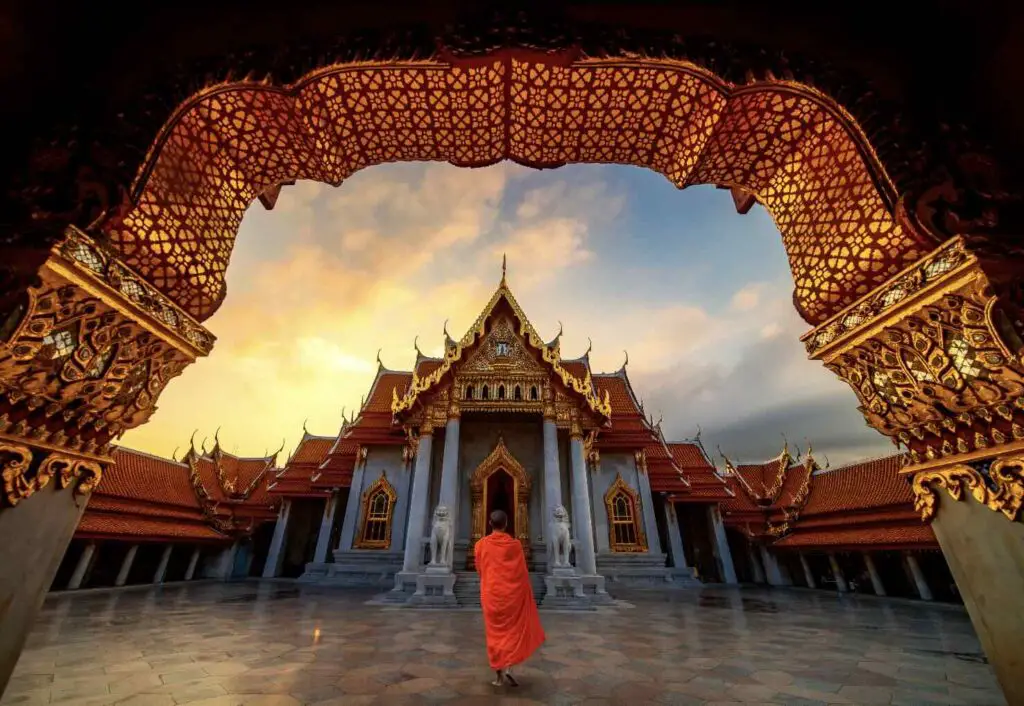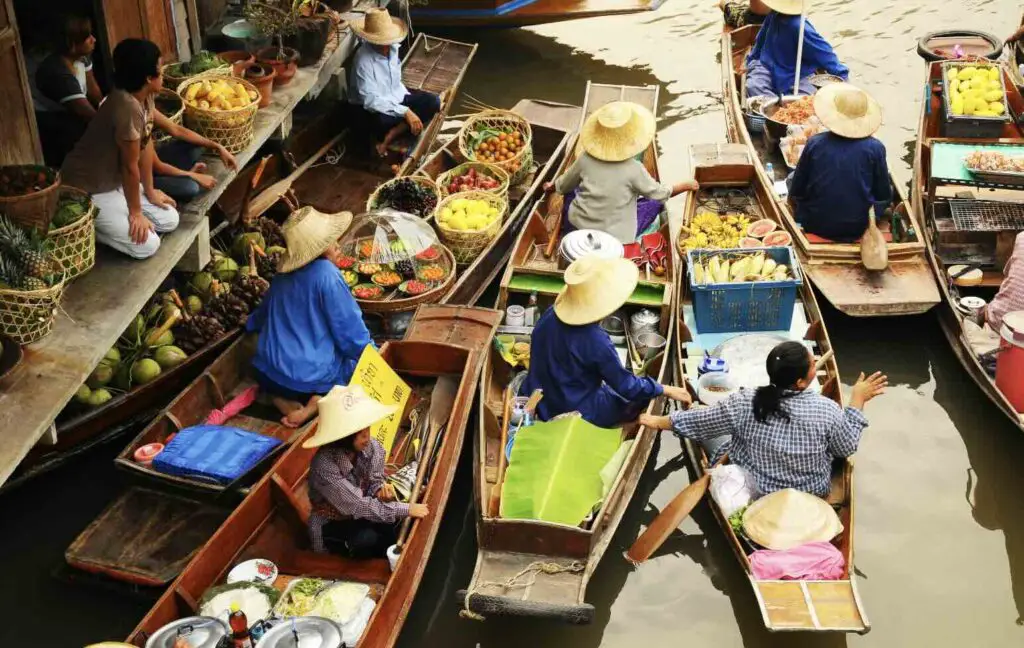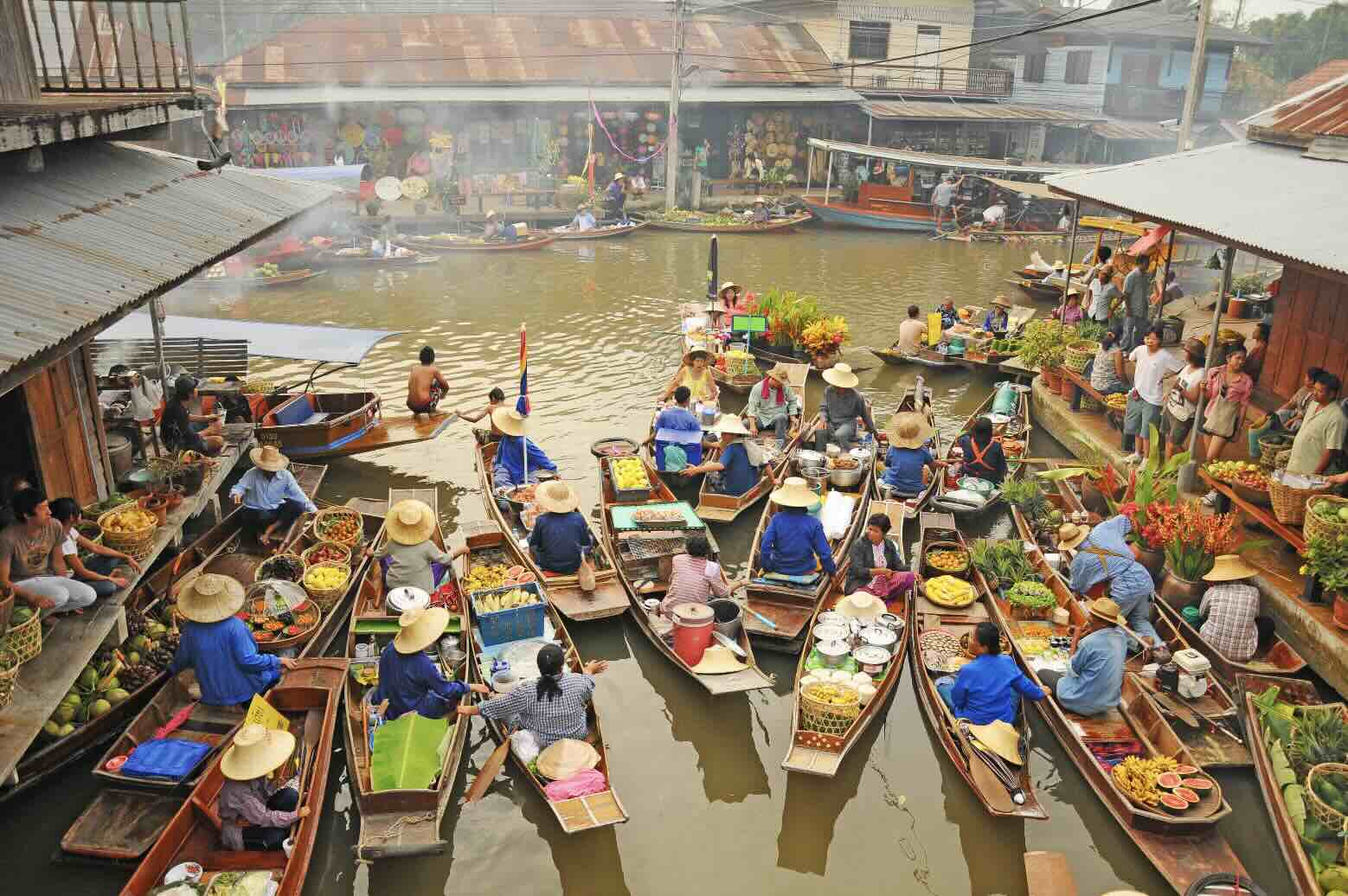Nestled at the heart of Southeast Asia, Thailand emerges as a country uniquely poised at the crossroads of cultural, economic, and natural richness. Bridging the gap between the vast expanse of the Asian continent and the sprawling archipelagos of the maritime realm, this nation’s geographical placement is a central figure in the historical and ongoing narrative of regional interconnectedness.
Thailand’s terrain, flanked by borders with Myanmar, Laos, Cambodia, and Malaysia, opens up a myriad of pathways that have long facilitated the exchange of goods, ideas, and traditions; its topographical and climatic diversity further enhances the ecological tapestry that entices explorers and scientists alike.
Table of Contents
- Geographical Placement of Thailand
- Cultural and Historical Influence of Thailand’s Continent
- Festivals Rooted in Geography
- Connecting Hearts and Horizons
- Modern Thailand: Interplay of Continent and Globalization
- Related Questions
Geographical Placement of Thailand
Unlocking Thailand: Your Pin on the Globe of Wanderlust
Are you daydreaming of a paradise that dances to the rhythm of the waves and buzzes with the melody of vibrant street markets? Let’s pinpoint where your wanderlust is tugging you towards. Ah, there it is—Thailand—a jewel nestled in the heart of Southeast Asia, a geographical tapestry as rich as its cultural heritage.
Latitude and Longitudes of Adventure
Thailand embraces the coordinates approximately between 5° and 20° North latitude and 97° and 105° East longitude. This places it squarely in the tropical zone, promising balmy weather year-round—an eternal invitation to sun-seekers worldwide.
Neighbors and Nautical Hues
Flanked by Myanmar to the north and west, Laos to the northeast, Cambodia to the southeast, and the slender stretch of Malaysia reaching down to the south, Thailand’s embrace of diversity isn’t just cultural; it’s geographical.
The Andaman Sea laps at its shores to the west, while the Gulf of Thailand sparkles to the south and east, offering a tranquil and exhilarating coastline. Don’t forget the ink-blue Pacific Ocean, which lounges to the southeast, adding a touch of the exotic to Thailand’s already vibrant tapestry.
Bangkok: The Heartbeat at the Hub
Bangkok, the beating heart of Thailand, doesn’t merely exist within the country’s bounds; it radiates the essence of the Thai spirit. Imagine a city where the traditional wai greeting blooms amidst the techno-futuristic skyline. This city pivots at around 13°45’N latitude and 100°29’E longitude — where the map unfolds into an adventure.
The Terrain Tells Tales
An explorer need not scamper from place to place; understanding a country’s topography can elevate the travel experience to celestial heights. Thailand’s terrain is like a precious gem with numerous facets: the mountainous Northern region, the Khorat Plateau to the east, and the verdant, rice-paddy-speckled Central Plains. Peninsular reaches stretch out down south as if longing to touch other worlds, dotted with idyllic islands that appear to float just atop the water’s surface.
A Climate of Welcoming Warmth
Sitting comfortably above the equator gifts Thailand with a tropical climate of three distinct seasons. From November to February, the cool months see a flock of travelers descending to bask in the sun’s gentle embrace.
From March through June, the hot season turns up the heat, making the waters of Thailand’s beaches ever more inviting. Following this is the monsoon season, between July and October, blanketing the country in life-giving rain, transforming the landscape into a watercolor painting of lush greenery.
Positioned for Cultural Riches
Thailand’s geographic placement has made it a melting pot of cultures, a midpoint between India and China in cultural flow. This is more than a haven for beach enthusiasts—it’s a historian’s haven, a treasure trove of temples, ancient ruins, and narratives etched in its soil. From the temple-sprinkled city of Chiang Mai to the ruins of Ayutthaya, geography transcends the lines on a map; it tells the story of civilizations, dynasties, and the ever-turning wheel of time.
Traveler’s Takeaway
As a digital nomad, wanderer, or traveler dreaming of distant shores, let Thailand’s geographical wonder beckon. Pack that bag with eagerness, pin your map with anticipation, and let the compass of your heart guide you to where tradition and modernity intertwine beautifully, where every latitude and longitude holds the promise of discovery.
A world of experiences awaits you in this corner of the globe. So go out there and let Thailand’s place on the world map redefine your understanding of adventure.

Cultural and Historical Influence of Thailand’s Continent
Unraveling Thailand’s Geographical Tapestry: A Doorway to Cultural Treasure
Welcome to the Land of Smiles, where geography plays the graceful maestro orchestrating Thailand’s symphonic cultural heritage and vibrant history. This is a journey through space and time, weaving through the intricate patterns that Thailand’s continental placement has embroidered on the nation’s cultural fabric.
Crossroads of Diversity
Thailand’s strategic placement at the crossroads of Southeast Asia has made it a melting pot of ethnicities, traditions, and historical influences. We’re not just talking about a meeting point for travelers but a grand stage where empires, traders, and settlers have contributed chapters to Thailand’s fascinating story. This convergence zone has connected the Thai people with influences from China, India, Cambodia, and even far-off Greco-Roman civilizations via the ancient trade routes.
Culinary Fusion on a Plate
The abundance of Thailand’s natural resources, shaped by its geographic diversity, has crafted a cuisine that tells the tale of its continental prowess. Imagine the lushness of rice fields and the bounty of the coastal areas spinning a palette of flavors that attract food lovers worldwide. Each region serves up its version of taste and spice, creating a food scene as varied as the landscapes themselves.
Gateways and Trade
Significant trade routes have passed through this geographically privileged nation for centuries, bringing with them the spices of India, the silk of China, and the religion of both. Imagine the Grand Palace in Bangkok not merely as a residence of royalty but as a global exchange hub, with each artifact and architectural flourish representing a cross-border handshake of cultural exchange.
Festivals Rooted in Geography
Thailand’s verdant fields and mighty rivers have given rise to festivals that mark the agricultural calendar and celebrate the bounties of earth and water. From the water-splashing fun of Songkran to the enchanting floating lanterns of Loi Krathong, these festivals are geographical poetry in motion, ingrained in the natural rhythm of the country’s landscape and seasons.
Artistic Landscapes
Beyond the tangible, the mystical landscapes of Thailand have inspired legions of artists, writers, and thinkers. The karst mountains and tranquil beaches are as much a canvas for the creative soul as they are natural formations. The contours of the land have been mirrored in the country’s architecture, dance, and music, crafting a cultural ethos intrinsically linked to its physical setting.
Martial Arts and Meditation
The kingdom’s geography has also cultivated a haven for spiritual growth and martial prowess. The calm serenity of the country’s numerous temples contrasts with the vigorous action within its Muay Thai rings, each aspect deeply rooted in the essence of Thai culture shaped by its geography.
Connecting Hearts and Horizons
Thailand’s geography does more than dictate its climate and scenery; it bonds the people’s hearts to the land and visitors. There’s an unspoken invitation in the air, a call to open one’s heart to the stories, customs, and smiles endemic to Thailand as its golden beaches and bustling markets.
Indeed, Thailand’s continental placement offers a geographical position and a dynamic cross-section of human experience, each latitude and longitude weaving together stories of cultural richness and historical depth. Unpack this treasure trove, and you’ll find that every mountain peak and river bend holds a narrative waiting to be discovered and cherished.
So, dear wanderers, when the winds of wanderlust whisk you to this enchanted corner of the world, remember that you’re stepping into a living, breathing mosaic of humanity, lovingly laid out by the geographical brushstrokes of Mother Nature herself.
No summary can contain Thailand’s spirit, for it must be lived, tasted, and felt – fully and joyously. So go ahead, dive into the heart of Thailand, and let its geographical magic transform you, just as it has transformed the countless souls before you.

Modern Thailand: Interplay of Continent and Globalization
Unveiling Thailand’s Geographical Canvas & Its Cultural Masterpiece
Thailand’s geographical tapestry weaves a vibrant kaleidoscope of ethnicities, traditions, and history. Often referred to as the Land of Smiles, the country reveals itself as a melting pot where a confluence of cultures creates an enchanting socio-cultural mosaic.
Its central location in Southeast Asia has made it a gathering place for people from various backgrounds, stitching together a rich cultural brocade that extends far beyond its borders.
The intricate web of ancient trade routes once slicing through the heart of Thailand has left indelible marks on the local culture and today’s society. These historic passages facilitated the flow of goods, beliefs, and ideas, entwining them into the very fabric of Thai life.
The result is a culture enriched by layers of Chinese, Indian, and Southeast Asian influences, evident in everything from the intricacy of temple architecture to the pantheon of deities worshipped by its people.
With each region of Thailand boasting unique ingredients and food preparations, the country’s geographic diversity has given rise to an equally diverse culinary scene. From the piquant and bold flavors of Isan cuisine to the sumptuous coconut-infused dishes of the South, Thai food is a cornucopia of flavors that tantalize the taste buds and tell the story of the land’s abundant natural resources.
As a nexus of global trade and cultural exchange, Thailand welcomes a symphony of foreign influences while sharing its customs with the world. With its strategic location bridging the Asian continent with the rest of the world, the country serves as an international crossroads where global citizens intersect, exchange ideas, and create a dynamic modern identity while preserving the rich heritage of the past.
Festivals in Thailand are deeply rooted in the country’s geography and agricultural practices, evolving with the lunar calendar and the changing seasons. Whether it is the water blessing ceremonies of Songkran or the lantern-lit skies during Loy Krathong, these festivals provide a lens into the rural heart of the nation and offer a platform for communal celebration and gratitude.
Majestic mountains, serene beaches, and lush jungles infuse Thailand’s art, architecture, dance, and music with an aura of mystique. The country’s landscapes are not merely backdrops but muses to creativity and expression, inspiring a plethora of artistic forms that resonate with the essence of Thailand’s splendor.
The geography of Thailand extends into its spiritual dimensions, being the cradle for practices like Vipassana meditation and the revered martial art of Muay Thai. These traditions connect individuals to the core elements of nature and the universe, promoting a holistic sense of well-being that many seekers traverse continents to experience.
The bond between the Thai people and their environment is profound and reflected in their famous hospitality. Visitors are not just guests, but participants invited to tread softly upon its soil, embrace the aromatic waft of Thai spices, participate in traditional crafts, and understand the Thai way of life—a symbiosis between humanity and nature.
In every curve of its rivers and rise of its temples lies a story of Thailand’s geography and cultural luxury waiting to be discovered and valued. The land whispers tales of ancient kingdoms, cosmopolitan synergy, and the quiet rhythms of rural life to those who wander its pathways. This unique fusion—this geographic alchemy—forges Thailand’s everlasting allure and invites the world to its vibrant shores.

With its majestic temples reflecting the golden hues of the setting sun and bustling marketplaces resonating with the harmonious chaos of modern life, Thailand continues to embody the spirited essence of its geographical lineage.
The country’s strategic location has not only sculpted its past but now serves as the backbone of its meteoric rise in the global arena, fueling advancements in commerce, technology, and tourism.
As the Kingdom of Thailand strides forward, it carries the indelible imprints of its continental legacy, ensuring its future remains as vibrant and steeped in richness as the tapestry of cultures that have thrived within its borders. Embracing the winds of globalization, Thailand stands resolute, a testament to the enduring allure and pivotal role of its cherished place on the world stage.
At A Bus On A Dusty Road, we talk about travel, life, and ex-pat living. We are all about “Living Life As A Global Citizen.” We explore social, cultural, and economic issues and travel.
We would love to have you be part of our community. Sign up for our newsletter to keep up-to-date by clicking here. If you have any questions, you can contact me, Anita, by clicking here.
Listen to our Podcast called Dusty Roads. You can find it on all major podcast platforms. Try out listening to one of our podcasts by clicking here.
Subscribe to our A Bus On A Dusty Road YouTube Channel with great videos and information by clicking here.
Related Questions
Vietnam Or Thailand, Which Country Is Better For Living?
Deciding between living in Vietnam or Thailand can be a difficult choice, as both countries offer unique opportunities for ex-pats and locals alike. With dynamic cultural influences, an exciting nightlife scene, and stunning natural attractions, it can be hard to decide which country is ultimately better. Read on to help you make a decision as to which place you should consider.
By clicking here, you can discover Vietnam Or Thailand, Which Country Is Better For Living?
How Cold Is Winter In Hanoi, Vietnam?
Winters in Hanoi can get quite cold, especially on a few days during the winter when it rains and the temperatures drop. The houses in Hanoi do not have central heating so that it can feel cooler in your home than outside. During the wintertime, the temperature can change daily and week to week.
By clicking here, you can discover How Cold Is Winter In Hanoi, Vietnam?
How Closely Related Are The Thai And Vietnamese Languages?
Thai and Vietnamese are both Asian-based languages, but they are from different language family groups despite being Asian-based. Both Thai and Vietnamese are tonal languages and are analytic languages. Both Thai and Vietnamese have similar-sounding vowels and sounds and similar word order.
By clicking here, you can discover How Closely Related Are The Thai And Vietnamese Languages?


